|
"Malinda Ann Hill decided to resume treatment for her eating disorder almost as soon as she shifted to working remotely in March 2020.”
Trapped in the House With an Eating Disorder By Virginia Sole-Smith The New York Times March 31, 2021 It has not been easy for me to share my story and ask for help even when I know I desperately need help. I have been struggling greatly with an eating disorder relapse that was exacerbated by the pandemic and the stalking I have experienced for over 11 years. I entered my first virtual partial hospital program on March 22, 2010 and left my second virtual partial hospital program on June 30, 2020 because I had to return to work. I am currently suffering from another serious relapse that worsened after another stalking incident on January 31, 2021. I entered my third virtual partial hospital program on March 15, 2021. Unfortunately, I was unexpectedly discharged from the program on on May 14, 2021 because the virtual program had to close suddenly and I was unable to attend the program in person. I entered my first virtual intensive outpatient program on May 17, 2021 while I continue to attend virtual peer support groups. I am waiting to receive assessments with the only other two eating disorder programs that are in-network with my insurance. I am currently on my second medical leave of absence from work so I am struggling financially, emotionally and physically. On July 1, I must pay $3,800 to continue treatment since my coverage starts over with a new medical plan administrator. If you can donate $5 (or more if you are able) to fund my continued treatment after July 1, I would greatly appreciate your financial assistance. If you cannot afford to help me at this time, I understand. Please keep me in your thoughts and prayers. Thank you. @malindaannhill Malinda Ann Hill June 1, 2021
0 Comments
I'm unofficially an ultramarathoner! I finished my 50K challenge on my 50th birthday on May 18. A HUGE shout-out goes to Sean, an extremely talented ultramarathoner who's training for a 200 mile race and slogged with me for many of the first 26.2 miles. Thank you Sean for the great conversation and encouragement. And, for joining my sister for a walk while I had to take an emergency trip home to deal with some GI issues, but I'll get to that in a bit! Even though I never knew Bruce Barnes, Sean is the perfect example of someone like him. Sean is both an amazing athlete and a super nice guy who gives back to the sport by volunteering for races and training programs . . . always there with a smile to support everyone else on the course. We're so lucky to have Sean in the Charlottesville running community. You're an inspiration and role model. Thank you! So how did it go? I couldn't sleep well because for two full days beforehand I had severe burning gut pain and GI issues (I'm 50, time to schedule the colonoscopy!). My twin sister and I grabbed the cooler and supplies and started walking the 1.28 miles to Darden Towe Park at 4:28 a.m. On Monday, I chalked my sidewalk and part of the trail with inspirational messages a couple friends sent me (thanks Ryan and Kayla!) as well as a few others that motivate me. It was great to see those as I headed out the door! I told Sean I might be cursing him later because I knew I ran those first 6 miles too "fast." Then around 10K I realized I was having the need to find a bathroom, but the portapotty was gone and the bathroom doors were locked. Sidenote: one of the reasons I chose to run on the Darden Towe side of the Rivanna rather than Riverview Park was because of real bathrooms, however I forgot they wouldn't be accessible until the park was officially open. Whoops! I debated what to do, but talked it over with Sean and decided to run home since it was only about a mile away. I'll spare you the details, but suffice to say I didn't make it back to my own toilet and had to find a tree to hide behind to take care of some emergency business in a plastic bag that I fortunately had with me. My predicament reminded me of my dad's "glad I had that jar of peanuts" traffic jam story that always has me on the floor laughing when he tells it. This was a "race" so I never stopped my watch and lost about 12 minutes changing clothes and trying to pull myself together before I got back out on the road again.  I have a smile on my face around mile 12 when I had fresh clothes and shoes after a pit stop at home. I have a smile on my face around mile 12 when I had fresh clothes and shoes after a pit stop at home. Around mile 20 I took another walking break to change clothes and use the bathroom. It was at that point that I was trying to do the math to figure out if I would be able to finish the marathon portion of the challenge under the finish time of my 1st marathon (5:17:03). My Garmin was starting to show the low battery warning so I new I was going to have to stop it and switch to Strava for the rest of my challenge anyway. After talking it over with Sean I realized if I kept at the current slog pace under 12 minute miles I could definitely do it if I hustled a little and that's why mile 26 was the fastest mile since mile 6. I hit 26.2 at 5:16:26. I thought Malinda would appreciate it if I stopped my Garmin at 5:18:00, but it actually added a second, doh! Of course now I think it would have been even cooler to have the full date, 5:18:21, as the first segment of my challenge, but oh well. :) I took a few selfies with Sean and said goodbye and gave myself the greenlight to just walk the rest of the 50K because it was getting warm and I didn't feel like pushing it. Luckily Fran finished his grading and was able to drop off a Starbucks Venti Caffe Misto with whole milk, 6 packets of Splenda, 6 pumps of Which Chocolate Mocha Sauce and 4 shots of espresso. This is my go-to free 50 stars reward drink. Normally, I only get 4 pumps of sauce to save on calories, but I was starting to get HANGRY! As I walked my last 5 miles I mobile ordered a lot of Thai food and started to catch Pokemon. My sister was in therapy and my husband was grabbing the food, so I finished my 50K with 5.18 miles on Strava all alone in front of my house. I looked again at the messages I wrote on the stairs: OUR DOUBTS ARE TRAITORS BE KIND YOU MATTER The past year has been quite a journey and I am so grateful that I was able to spend my 50th birthday walking with my best friend (my twin!), running with a great guy (Sean!), raising almost $2K for Alex's Lemonade Stand Foundation, and receiving so many awesome Flat Twin photos from friends and family across the country. Thank you to everyone who helped celebrate this milestone birthday. You have no idea how much your support means to my sister and me. It gives us such joy and comfort to know people care. It's not too late to share a photo, positive message, or donation. We like to think of it as our "Birthday Month"! My 50K on garmin and strava...Read about Leah's unofficial ultramarathon attempt, 50K on our 50th birthday, to raise money for Alex's Lemonade Stand Foundation for Childhood Cancer. leahcville.wordpress.com/2021/05/09/twinsrun50k Our 50th birthday is a month away and we're getting ready to celebrate!
We want you to join in the fun by taking a photo with a Flat Twin and joining in a virtual challenge to walk or run a total of 5K, 50K, or 50 miles in the month of May to raise money for Alex's Lemonade Stand Foundation for Childhood Cancer. Anxiety, disrupted routines and loneliness are fueling people’s food issues as they hunker down during the Covid-19 crisis.
By Virginia Sole-Smith March 31, 2021, 11:17 a.m. ET New York Times Malinda Ann Hill decided to resume treatment for her eating disorder almost as soon as she shifted to working remotely in March 2020. She knew even before the pandemic that isolation at home would be detrimental to her ongoing recovery from anorexia nervosa. “I had made a really distinct decision not to work from home, so that sent me into a tailspin,” said Ms. Hill, 49, who lives with her daughter in Wynnewood, Pa., and works as an art therapist and bereavement coordinator for a local hospital. The community and structure of her workplace were helpful for someone who had struggled with disordered eating since her early teens. Sudden loneliness, mounting fears about the unfolding pandemic and a new lack of boundaries between work and home all helped tip off a relapse that Ms. Hill said had already been brewing. “I thought maybe I should get back into treatment now,” she said. “Because this is going to be bad. And this is going to set off a lot of other people, too.” Indeed, some doctors, therapists and dietitians who treat eating disorders, such as anorexia, bulimia and binge eating disorder, are reporting an overwhelming spike in the need for their services, with waiting lists growing at many practices and treatment centers across the country. The National Eating Disorders Association reported a 41 percent increase in messages to its telephone and online help lines in January 2021 compared with January 2020. And in a study of about 1,000 American and Dutch people with eating disorders published last July, more than one-third of subjects reported that they were restricting their diet and increasing “compensatory behaviors,” like purging and exercise. Among the Americans, 23 percent also said they would regularly binge-eat stockpiled food. “I’m seeing more clients, and I’m getting clients who are sicker when they come to me, because we cannot get them access to a higher level of treatment,” said Whitney Trotter, a registered dietitian and nurse in Memphis who provides one-on-one nutritional counseling for adolescents and adults of color with eating disorders. She noted that many in-patient treatment centers are fully booked due to the heightened demand. The National Eating Disorders Association reported a 41 percent increase in messages to its telephone and online help lines in January 2021 compared with January 2020. And in a study of about 1,000 American and Dutch people with eating disorders published last July, more than one-third of subjects reported that they were restricting their diet and increasing “compensatory behaviors,” like purging and exercise. Among the Americans, 23 percent also said they would regularly binge-eat stockpiled food. “I’m seeing more clients, and I’m getting clients who are sicker when they come to me, because we cannot get them access to a higher level of treatment,” said Whitney Trotter, a registered dietitian and nurse in Memphis who provides one-on-one nutritional counseling for adolescents and adults of color with eating disorders. She noted that many in-patient treatment centers are fully booked due to the heightened demand. The uptick in her practice stems from a mix of relapse cases, like Ms. Hill’s, and disorders that have newly taken hold in the past year. “I’m treating more teenagers, and also more teachers, doctors, nurses and other first responders and essential personnel,” Ms. Trotter said. “An eating disorder can manifest as a trauma response. Our nervous systems were not meant to deal with a long-term pandemic.” How food scarcity can stoke eating disorders Early on in the pandemic, fears around grocery store shortages and food access re-triggered some people’s disordered eating. “I found myself lying awake at 3 a.m., thinking, ‘What if there is no more baby food at the store?’” said Aneidys Reyes, 33, a stay-at-home father in Madison, Wis., who had been in eating disorder recovery for more than six years before the pandemic. Mx. Reyes, who was raised as a girl, said that their eating disorder originally began as a coping strategy for the gender dysphoria they experienced as a teenager. Now that they identify as transgender, the urge to restrict food is less connected to body image anxieties. “It’s weird for me, because it’s not the same old eating disorder,” they said. “But once I’m at a certain level of anxiety, then my brain is like, ‘Do you remember these neuropathways? What if it’s what you’re eating? What if your clothes don’t fit tomorrow?’ All these old, familiar thoughts come back.” Even after grocery store shortages eased, patients who were being treated for eating disorders struggled with how pandemic rules required them to navigate eating with less professional support. “For a patient who would previously have spent the day at a treatment center having all their meals provided for them, a virtual program requires so much more autonomy than they would have previously had,” said Lauren Muhlheim, a psychologist in private practice in Los Angeles. Ms. Hill deliberately chose an in-person treatment program, even during the early days of social distancing, because she knew she needed hands-on help making decisions around what and how much to eat. When her program switched to virtual support, she had to think about meal planning again. “Suddenly I had to be in charge of the food,” she said. “They wanted me to have more variety, but I didn’t want to go back to the grocery store. I started having panic attacks.” Our societal tendency, on social media especially, to demonize quarantine comfort eating and pandemic-related weight gain hasn’t helped. “The pressure to have used the pandemic time to have gotten or kept in shape is a big theme,” said Dr. Muhlheim. Ms. Hill said that “diet culture noise” had felt louder to her in the past year. Why treating eating disorders over Zoom is harder The majority of residential eating disorder treatment programs have stayed in-person, but they are typically reserved for patients who need the highest level of care due to the severity of their eating disorder behaviors or related medical complications. The next step down is known as a “partial hospitalization program,” where patients live at home and manage some meals themselves, but attend a mix of individual and group therapy meetings, plus meal support sessions (where eating is monitored so patients cannot restrict food or purge afterward), for anywhere from six to 11 hours a day. Many such programs, as well as individual outpatient services (where patients have daily or weekly check-ins with a therapist or dietitian), have shifted to a virtual treatment model. In addition to leaving patients to navigate food shopping and meal preparation alone, the virtual model makes meal support sessions trickier. “You can’t tell as well from a camera how much someone is eating,” Dr. Muhlheim said. Dr. Muhlheim said that she is also concerned about the loss of casual interactions that normally take place between participants in group treatment. “You can only have one conversation at a time on Zoom,” she said. “You can’t just pull someone over to chat, so you lose a lot of that connection.” In fact, in a recent survey of 63 eating disorder patients, 68 percent said they would not choose to continue with online therapy once in-person services resumed. But some therapists said they are thrilled that virtual services have increased access for patients who would otherwise not be able to travel for treatment. “For my teacher clients, especially, virtual therapy is much more accessible because they can do a session on a planning period or right at the end of the school day,” noted Ms. Trotter, the dietitian. Virtual care can also be more affordable than residential treatment programs. Sometimes it’s even free. In March of 2020, Diane Summers, a nutrition therapist in Seattle, asked her colleagues if anyone had time to offer no-cost meal support via Instagram Live. “I was kind of hoping for maybe two or three people a day to go live,” she said. “But we were just flooded with willingness to be a part of the project.” Therapists and dietitians signed up in every time zone, enabling the account (@covid19eatingsupport) to offer live meal support 24 hours a day for several months of the pandemic. When teens fixate on restrictive eating Teenagers have been particularly vulnerable to developing eating disorders during the pandemic, both because adolescence is already the most common time for such struggles to emerge and because of the added pressures they face now. “It’s a combination of the loss of structure, the loss of peer connections and the loss of their usual activities,” Dr. Muhlheim said. “They have all this time and they decide to focus on an exercise program, or maybe it feels like running is the only thing they can really still do. But we know exercise is a huge trigger.” That’s how it started for Lily, a 16-year-old high school sophomore in Los Angeles who said that body image anxieties weren’t a big part of her life until the pandemic. “I don’t think weight loss was ever on my mind at all,” she said. “It was more of, ‘I love running, I have all this time, so why not push myself and see how far I can run?’” She began working out every day to fill the time previously occupied by school and team sports. “Lily is super book smart and school comes easily to her, so she’s had a lot of extra time,” with the switch to remote learning, her mom, Nikki, explained. (The family asked to use only their first names to protect Lily’s privacy.) After a few weeks of intensive exercise, Nikki noticed that Lily was eating less at family meals, too. “I wasn’t necessarily skipping meals, but I was trying to eat less meat and dessert and more vegetables,” Lily said. “I thought I was being healthy.” But she also became more fixated on her weight and further curbed her eating. In those who are vulnerable to eating disorders, even unintentionally dipping into a negative energy balance, which happens when you expend more energy than you consume in calories, can trigger the rigid, restrictive mindset that is the hallmark of most eating disorders, said Dr. Kenisha Campbell, director of adolescent medicine outpatient clinical services at the Children’s Hospital of Philadelphia. “Eating disorders are brain disorders because the brain cannot function without appropriate nutrition. So once the ‘eating disorder brain’ is in control, they can’t make any decisions around eating,” explained Dr. Campbell, who specializes in eating disorder treatment. “We have to feed the brain, so the brain can fight the eating disorder.” By December, Lily often felt dizzy and had developed a resting heart rate of 40 beats per minute, which was dangerously low for her. She was put on bed rest by her family doctor, and a psychologist prescribed an intensive family-based treatment in which her parents planned meals and monitored everything she ate. On tough days, it felt like the whole family was trapped in the house with her eating disorder, Nikki said. Lily knows that once going out for dinner or getting ice cream with friends is again an option, she’ll be presented with more challenges than she currently has when eating in the safety of her own home. “It doesn’t feel like I have to miss out on things because of my eating disorder,” she said. “I’m missing out on everything because of the pandemic.” _________________ Virginia Sole-Smith is the author of “The Eating Instinct: Food Culture, Body Image and Guilt in America,” and writes the newsletter Burnt Toast. I love Ugly Christmas Sweaters and holiday music! Had some fun making a couple Twins Run sweater icons. :)
I love The Cruxshadows Xmas music and here's a link to 30 minute compilation. No words can express how grateful I am to my identical twin sister for sticking by my side for one of my most difficult marathons ever. Despite one bad thing after another sabotaging the race I had trained months for, I was determined to spend most of the Boston Marathon not wallowing in how badly I was feeling (both physically and emotionally), but being appreciative for the support of my sister because without her the entire experience would have been so much worse and not nearly as special and memorable.
My biggest post-race regret is wondering if I’d adjusted my goal before the starting line, could we both have actually enjoyed the time from Hopkington to Ashland, Framingham, Natick, Wellesley, Newton, Brookline, and Boston? Was it ever possible for me to have a relaxed, celebratory, long run to Boylston Street? Or was I doomed to experience extreme discomfort and struggle to finish no matter what? Even though I was struggling for miles and miles, it gave me a boost to see how excited my twin was to be there ... hi-five'ing hundreds of fans, smiling as they called out "GO TWINS RUN!" "LOVE THE SPARKLE SKIRTS!" I competed in three races before Boston that predicted I was in shape for a 3:42-3:51 marathon (two ten milers in 1:21 and 1:20 and an 8K in 38:53). So I felt relatively confident that under the right conditions I could run my A goal of 3:52, especially since I had previously run Boston in 3:53 in 2013 and 3:52 in 2014. Not only did I have those race performances to boost my confidence, but for the first time in leading up to the Boston Marathon, I had run five long runs of 20 miles or more on the roads, the longest being 24 miles. My final long run was my strongest and fastest and I truly believed I was ready to move past my disappointing performances in Boston 2015 and Chicago 2016 when I ran 4:08 and 4:07. It seemed like an eternity since the last time I achieved my goal in a marathon - Chicago 2015 when I ran 3:49:56 to BQ for 2017, but I was hopeful I could finally break my bad streak of "failures". The first thing that derailed me on race day was a blister on the top of my right big toe. I can’t believe how something so small can hurt so much, and I’ve never had a blister develop so soon into a race. I was trying to adjust my gait to not exasperate the pain, but it was of no use. After 5K I knew a time goal was out the window, but our pace didn’t really start to tank until after 13 miles, that’s when I realized it was going to be a long, painful day. I was near tears confiding to my sister, “I can’t believe I trained so hard for this and it was all for NOTHING!.” Unfortunately, it wasn't just the blister that I had to endure. As the miles went on my piriformis was seriously hurting me (and I had endured three dry needling sessions a week prior to the race hoping to calm down the area), I got some serious chafing under my right arm and I felt really hungry early on despite eating more prior to the race than I ever had before and taking gatorade at nearly every stop. I had no energy and felt tired by mile 14 and it just kept getting worse every mile thereafter. I was running 11-12 minute pace and wasn't even stopping for a walk break. This was the first time I actually "ran" through the Newton Hills without stopping for a lengthy walk break. I shared my race photos with a co-worker who asked if I always run with my hair down. Not usually! That’s a clear sign of me giving up on time and hoping for some decent race photos. That’s also why I always run a marathon with lipstick in my pocket. I started reapplying as I was slogging up Heartbreak Hill and a spectator laughed, “Look at her! She’s running and putting on lipstick!” I did so one more time at mile 25 in the portapotty with the added benefit of having a mirror. I’m so grateful for the amazing spectators who bring plenty of food for the runners, especially along the Newton Hills. When I saw Sour Patch Kids listed as an option on a poster board filled with types of snacks, I doubled back and asked for a bag, screaming “thank you so much! I love you!” Soon after that I grabbed a bag of pretzels and nearly broke down in tears when I saw a message was written on the plastic bag, “I BELIEVE IN YOU!” That was the only photo I took along the course – a picture of that bag in front of my sister running ahead of me. My husband thinks that kind of motivational stuff is corny, but I NEEDED that so much at that point of the course. Those random acts of kindness is what makes Boston Marathon Spectators the best in the world. I hope I have the opportunity to be a be part of that amazing cheer squad next year. Random thoughts - Before the race a group of guys were offering cans of beer. I stopped for a novelty photo of me pretending to grab one. One guy yelled, 'No taking pictures if you're not going to drink it!" Wondering if maybe I should have taking that can. :) Early on when Malinda started to complain about it being hot before stopping herself, I said with a chuckle, “The sun is giving me energy!” Yeah, right. 😊 A picture is worth a 1000 words and everyone sees something different. One of my fave pictures from the race got these different reactions from two of my friends: - “Malinda looks all happy and shit and you look near death. - “Looking good! A true jock.” Never grab a shot of alcohol if you think you might spill it on yourself. I must have run almost 6 miles smelling like beer and that was not pleasant. ☹ Nothing is more exciting than running into someone from your hometown. I saw another Charlottesville runner early on in the race and we both agreed it was a day to give up on a time goal. With less than a mile to go, a very speedy Linda Scandore, passed us and said hi on her way to a 10th place Age Group finish and another BQ, surpassing her goal time. WOW! Power songs that I played over and over – “Tough Girls (Got to Tough it Out) by Plastic Ants, “Alright” by Aaron Sprinkle, and “In this Together” by Apoptygma Berzerk Many thanks to our family, friends, runners and others who donated to Malinda's Dana-Farber Marathon Challenge fundraising page. It's not too late to help Malinda reach fundraising goal by Wednesday, May 17. If you can donate $5 by May 17, we'll match your gift to double the impact of your generosity. No donation is too small and 100% of every $1 supports cancer research. rundfmc.org/2017/malindah Thanks so much for your support!  My 1st Boston Marathon by @MalindaAnnHill I'm so very grateful for the opportunity to run my 1st Boston Marathon to support the Dana-Farber Cancer Institute. I chose to be a charity runner with #RunDFMC because 100% of every $1 donated funds cancer research. Asking people to donate money has never been easy for me even though I've been running to support Alex's Lemonade Stand Foundation for Childhood Cancer since 2012. I'm certain that fundraising is more difficult for me than training for the 12 attempts it took me to qualify for the Boston Marathon - and that was extremely difficult. ;-) So, I wanted to thank my friends, family and anonymous donors who have generously donated to my fundraising page. Because your support means so very much to me, I've matched every donation to double the impact of your generosity. As of today, my fundraising total is $3,000 and I will continue to match all donations until I reach to my 1st fundraising goal of $5,000. Leah and I are thankful for the opportunity to run Boston Marathon together in memory of Leah's brother-in-law, Michael and our grandmother, who my daughter affectionately called GG. As we run, we will be thinking of our many friends who have lost loved ones to cancer. If you have not already donated, please consider donating $5 to my fundraising page. No donation is too small and every $1 donated will help us go the distance to conquer cancer. Thanks in advance for your support. Have you ever been a charity runner? Did you have difficulty reaching your fundraising minimum? Your thoughts and suggestions are appreciated. (All comments are published after review). |
AuthorsIdentical twins & masters marathon moms. @LeahCville & Archives
June 2021
Categories |





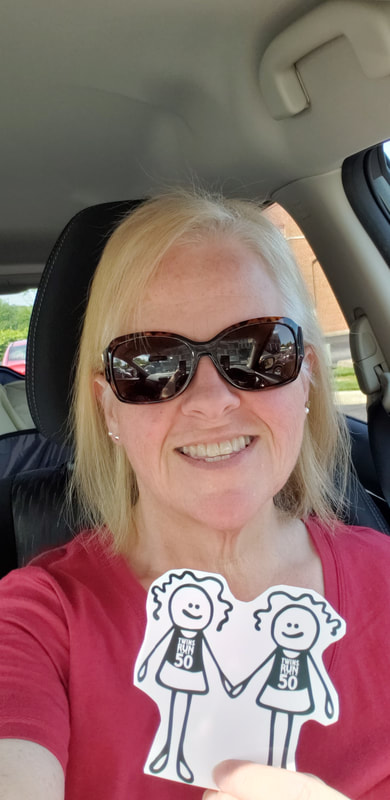





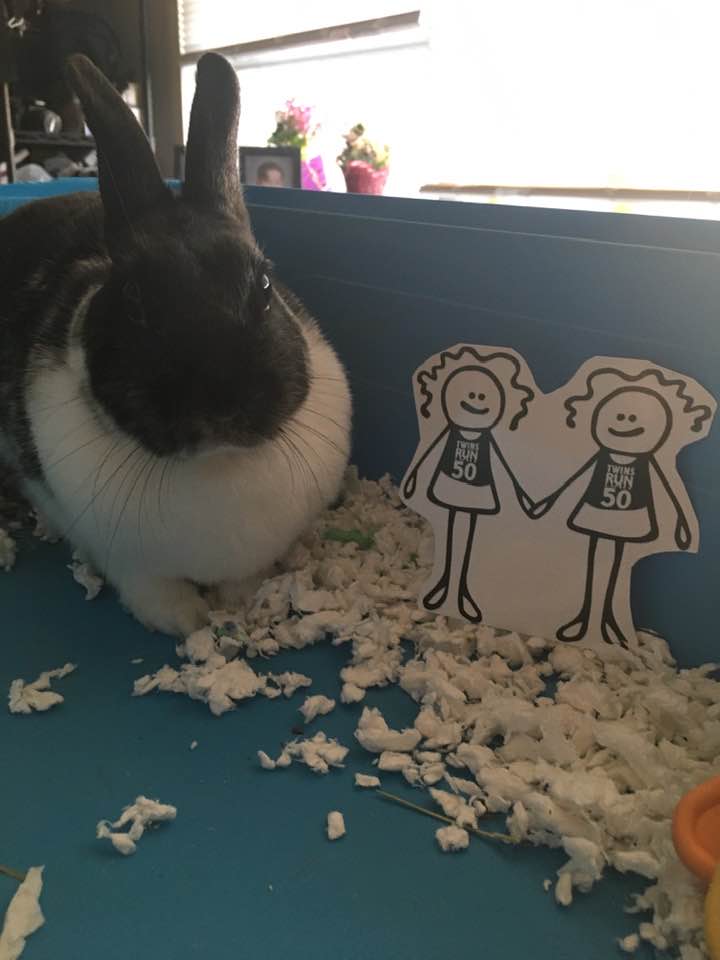


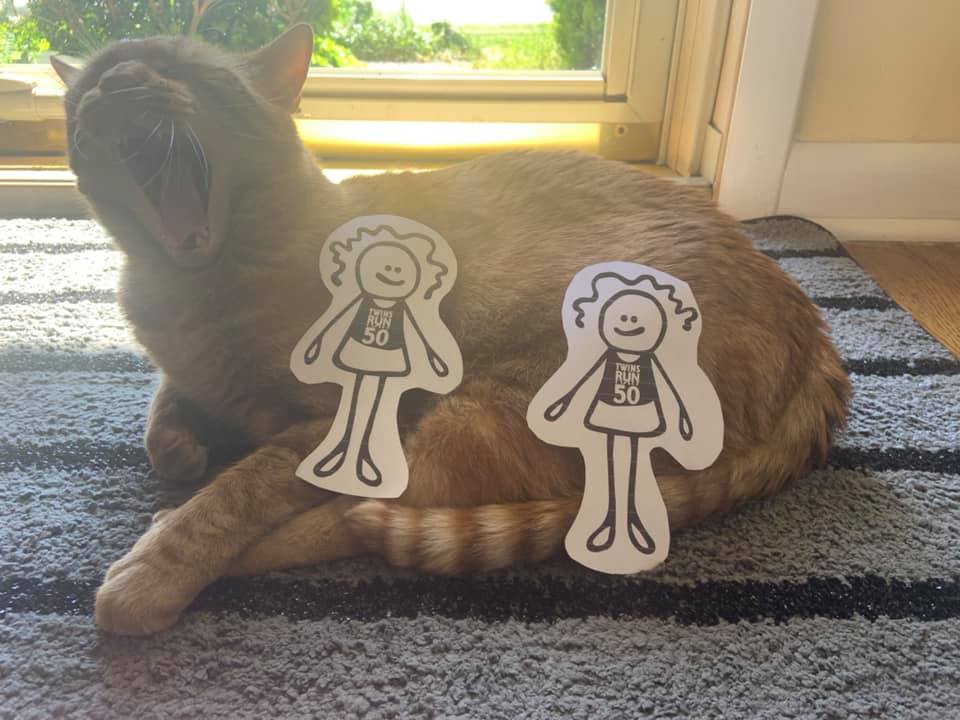



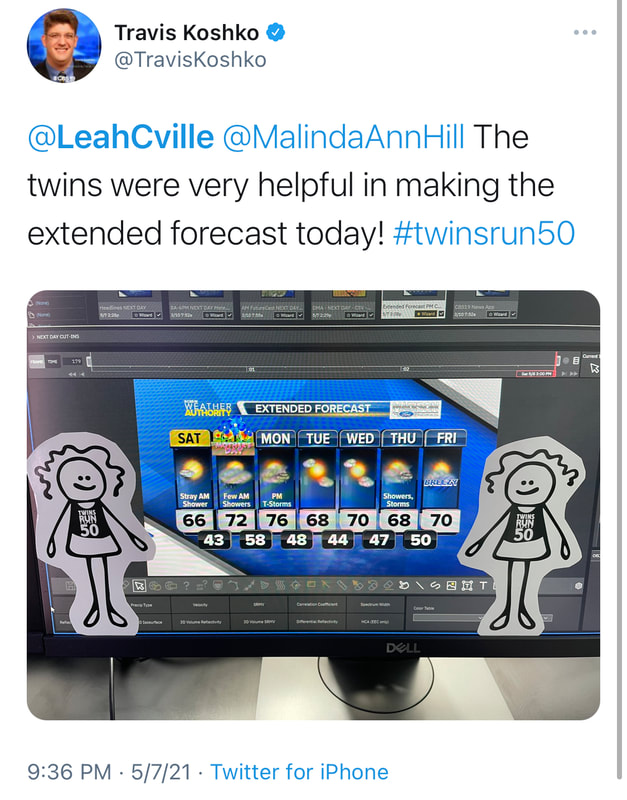


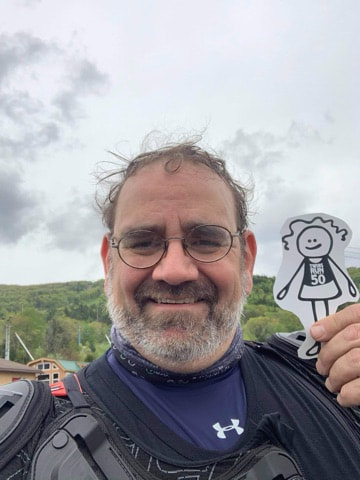


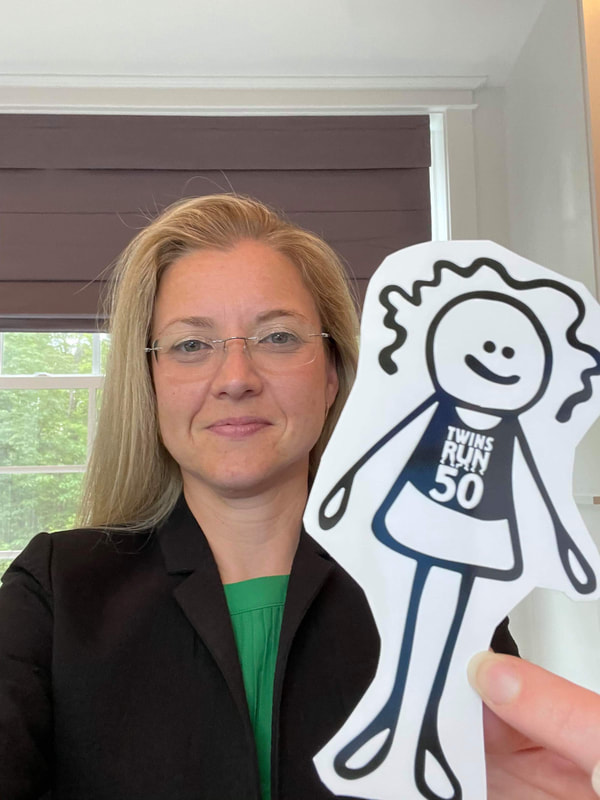


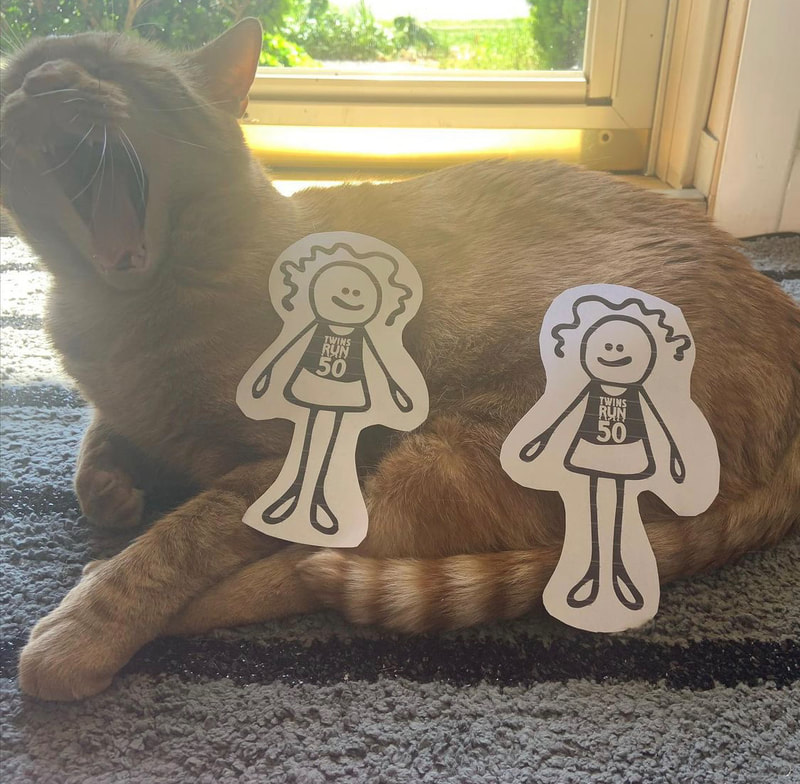




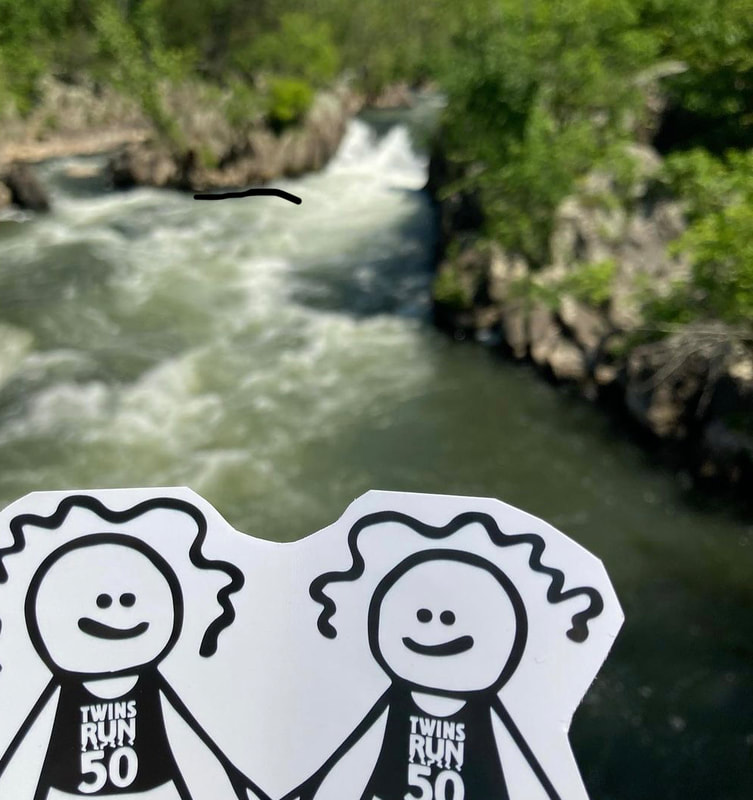


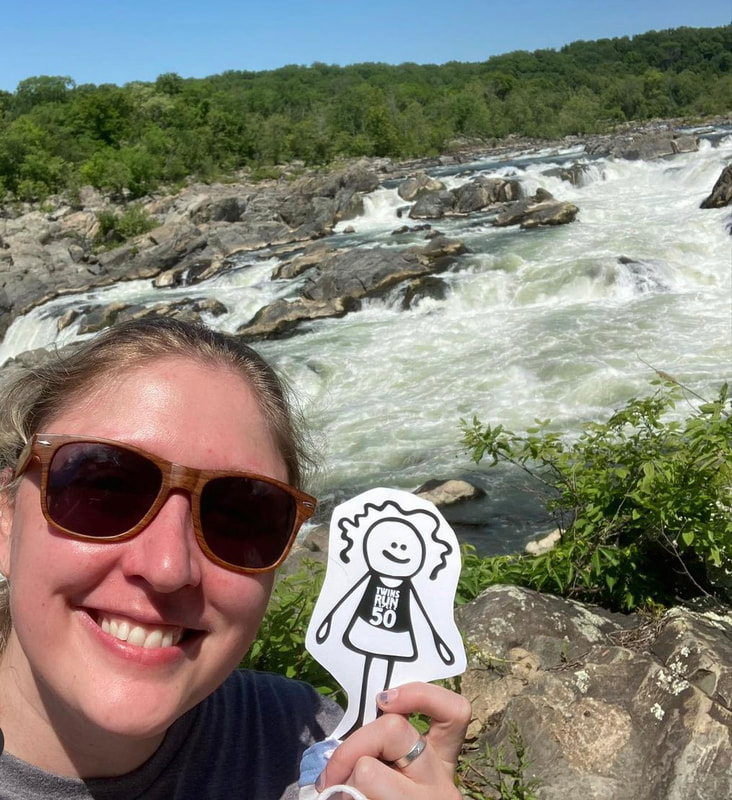

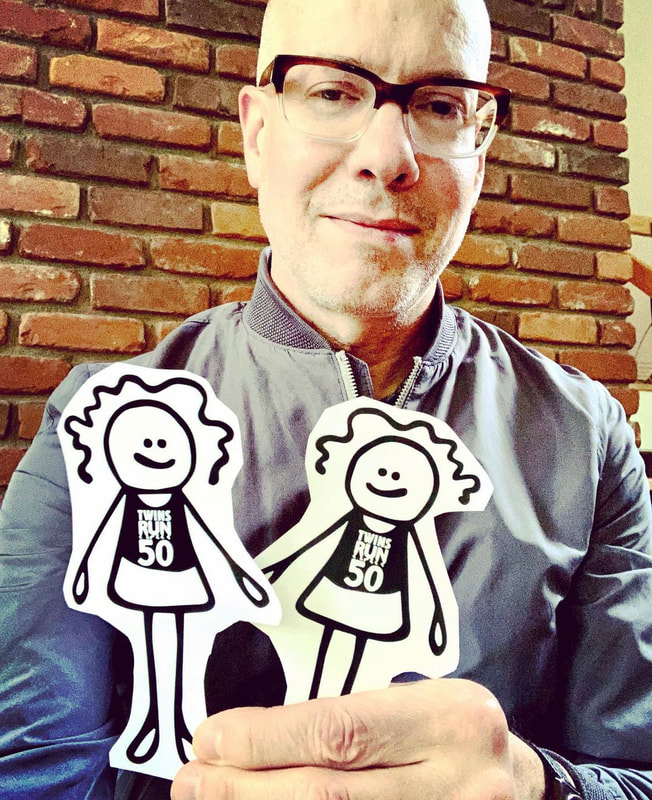
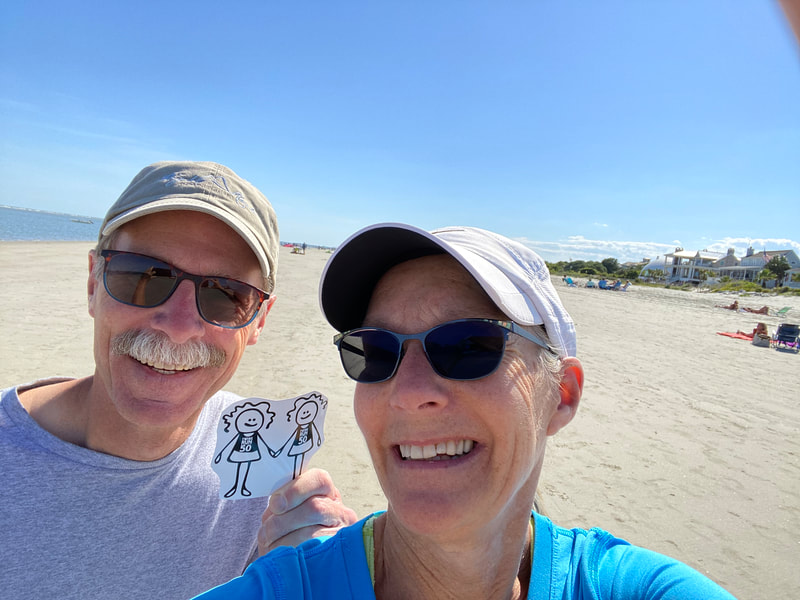
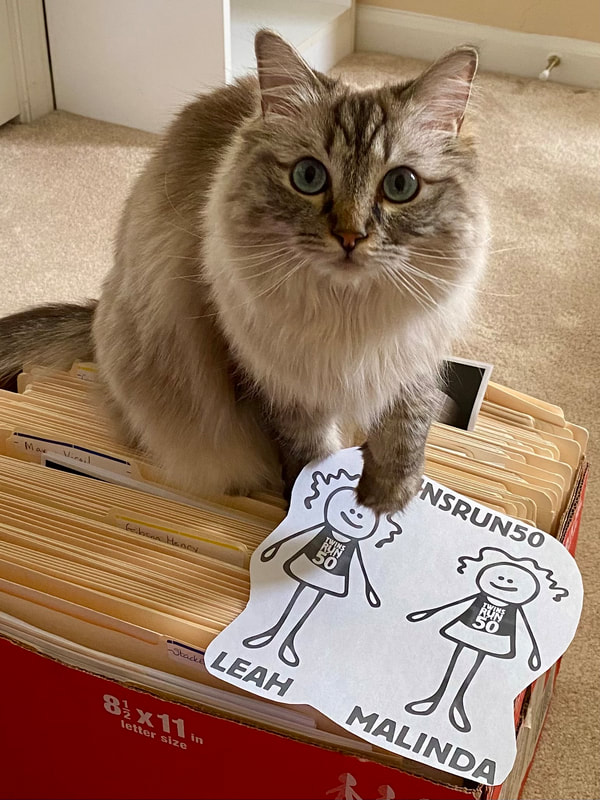







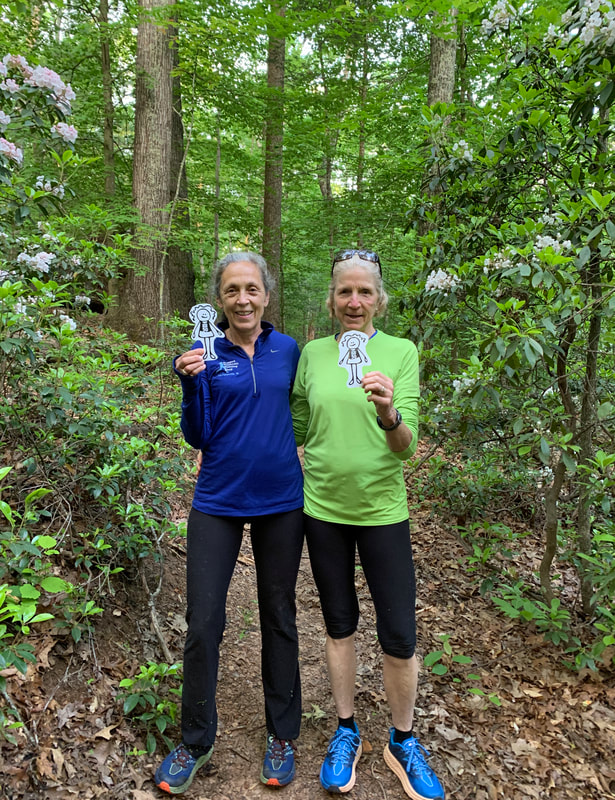

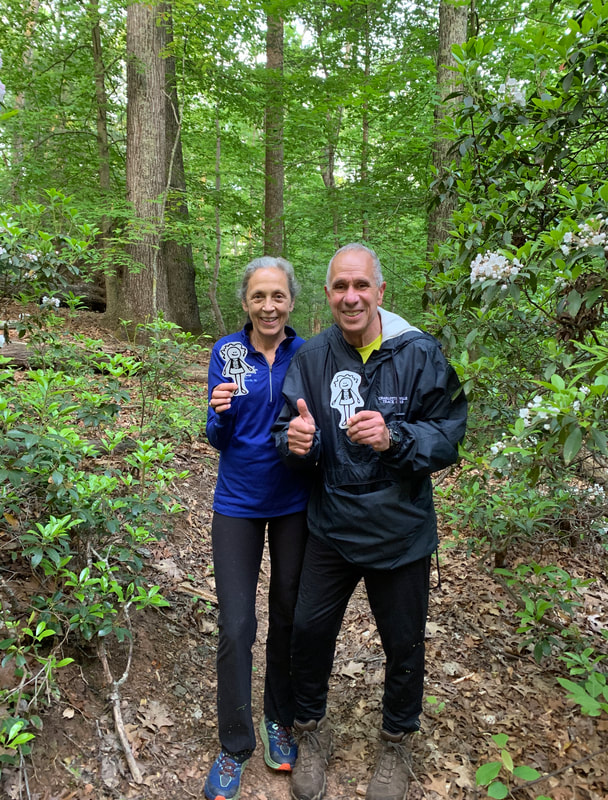
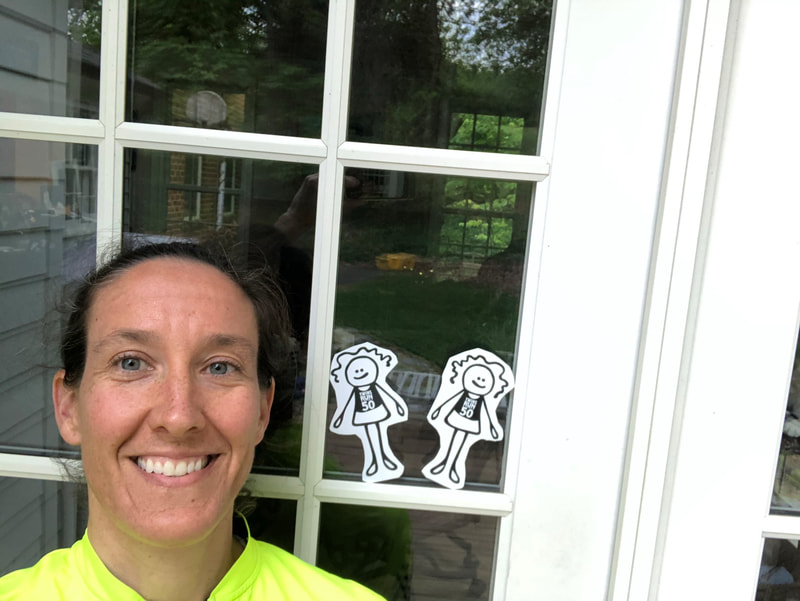
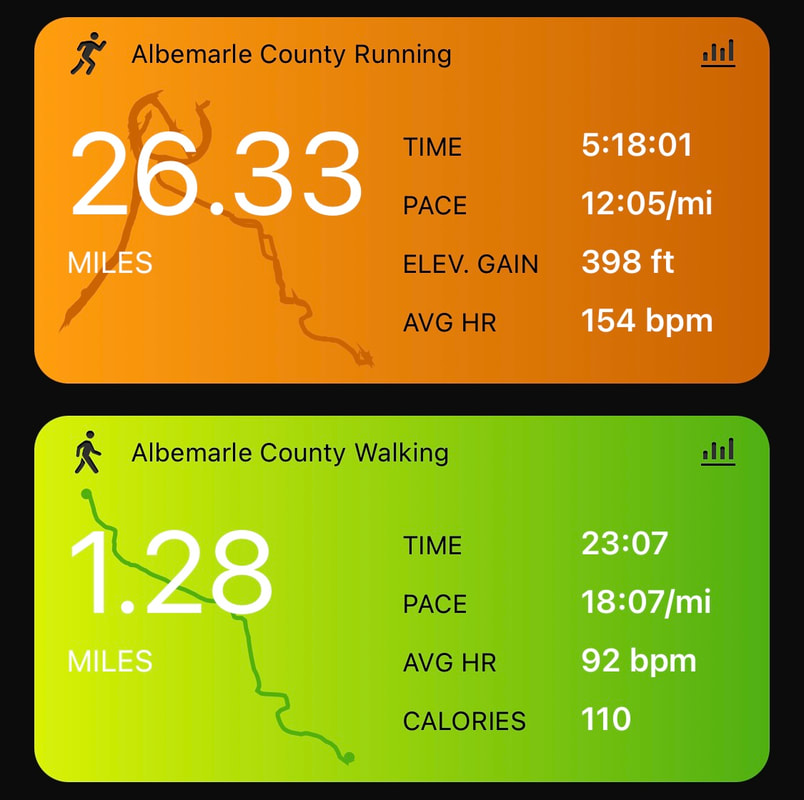



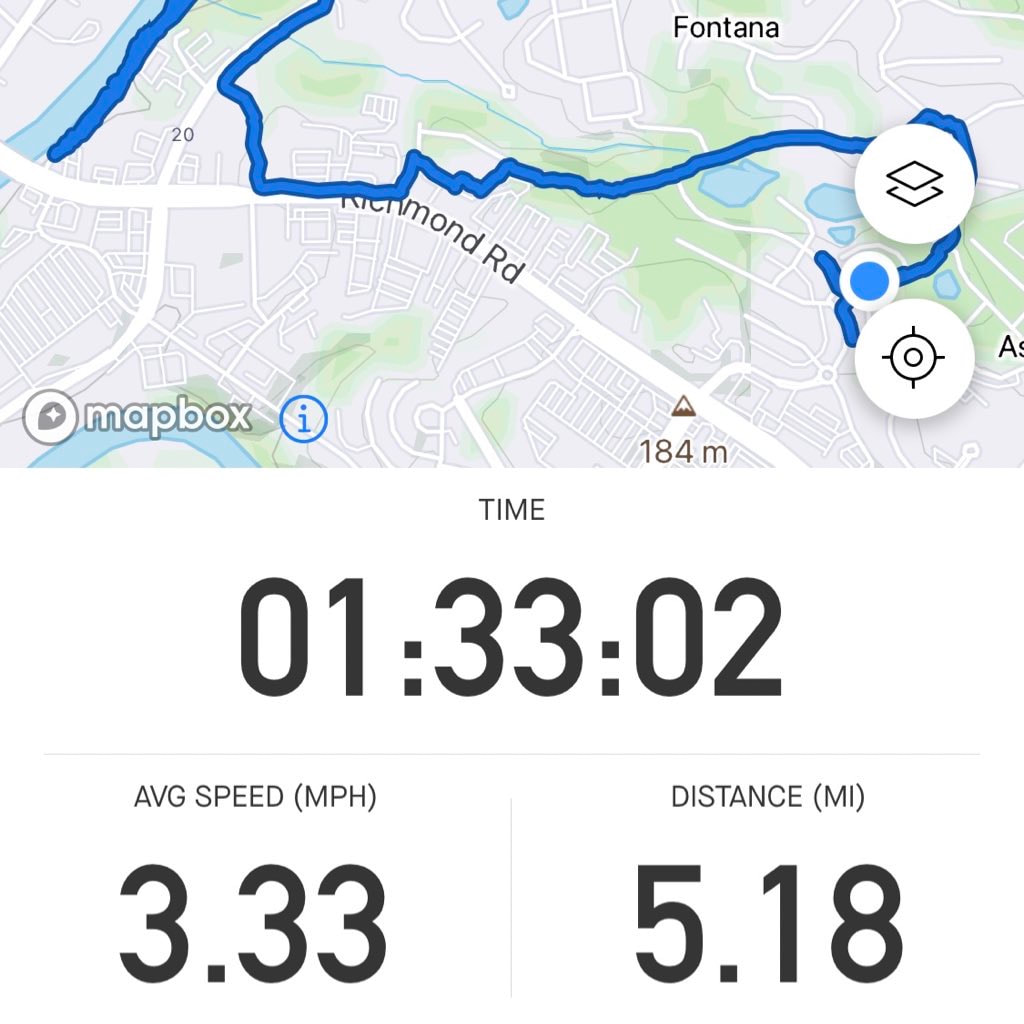


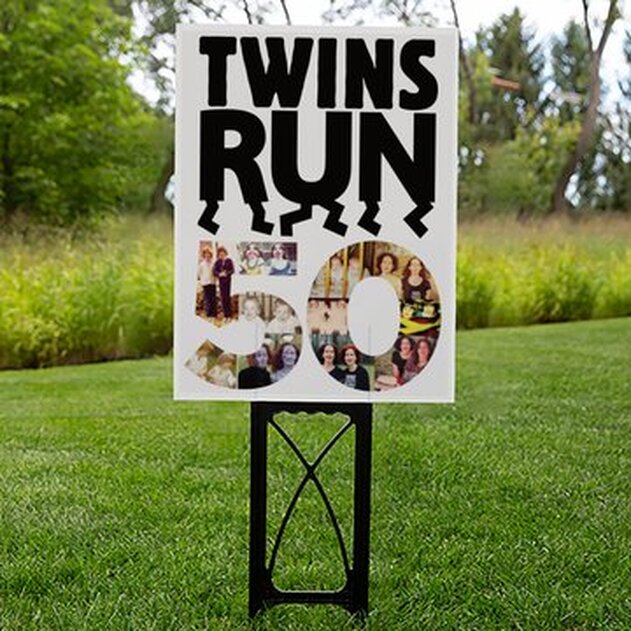


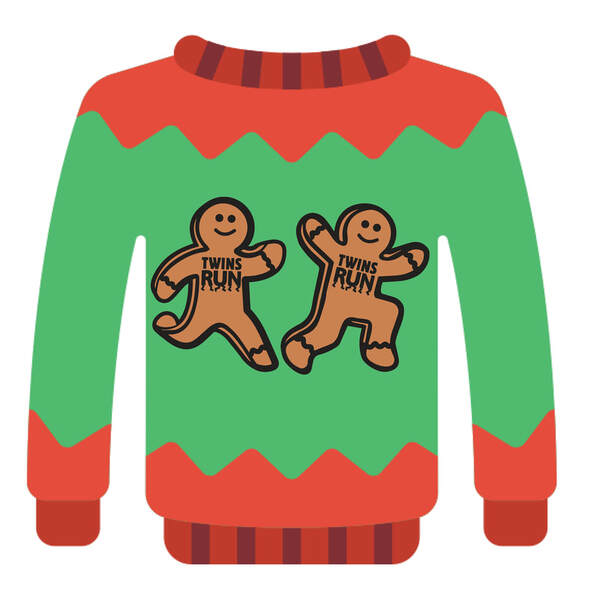


 RSS Feed
RSS Feed
